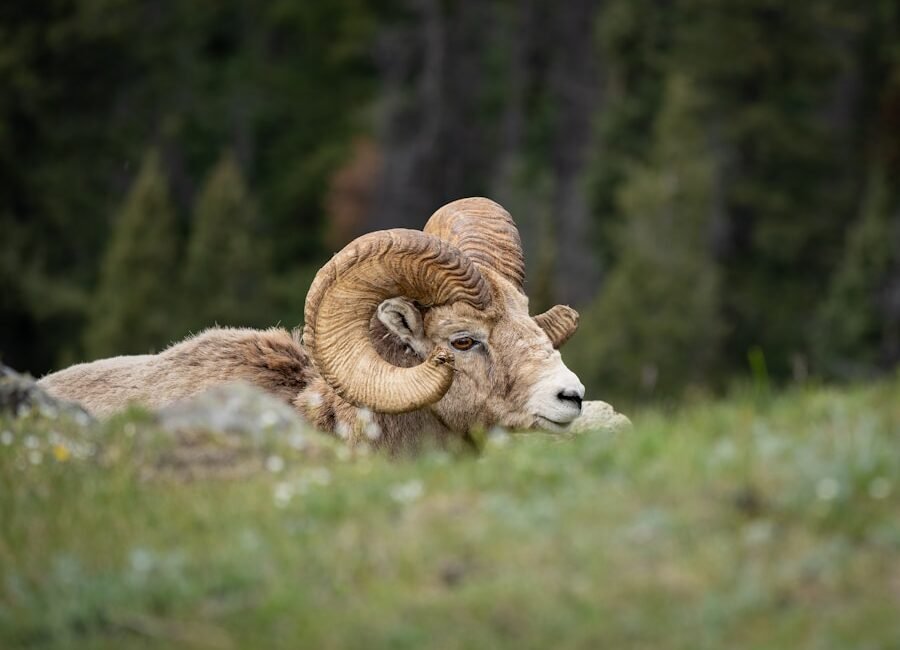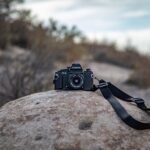Telephoto lenses are an essential tool for wildlife photographers, allowing them to capture stunning images of animals in their natural habitats from a distance. These lenses have a long focal length, which enables photographers to zoom in on their subjects without getting too close and disturbing them. This is particularly important when photographing wild animals, as getting too close can be dangerous for both the photographer and the animal. Telephoto lenses also have a narrow field of view, which helps to isolate the subject and create a beautiful, blurred background, making the animal stand out in the photograph.
In addition to allowing photographers to maintain a safe distance from their subjects, telephoto lenses also enable them to capture detailed and intimate shots of wildlife. The long focal length of these lenses allows photographers to fill the frame with their subjects, capturing every detail of their fur, feathers, or scales. This level of detail can bring the viewer closer to the animal and create a more immersive and impactful photograph. Furthermore, telephoto lenses are also essential for capturing fast-moving wildlife, such as birds in flight or running mammals, as they allow photographers to track and focus on their subjects with precision.
Factors to Consider When Choosing a Telephoto Lens for Wildlife Photography
When choosing a telephoto lens for wildlife photography, there are several factors to consider to ensure that you select the best lens for your needs. One of the most important considerations is the focal length of the lens, as this will determine how close you can get to your subjects and how much detail you can capture. For wildlife photography, a focal length of at least 300mm is recommended, as this will allow you to capture distant subjects without sacrificing image quality.
Another important factor to consider is the maximum aperture of the lens, as this will affect its performance in low light conditions and its ability to create a shallow depth of field. A wider maximum aperture, such as f/2.8, will allow you to shoot in low light and create beautiful background blur, while a narrower aperture, such as f/5.6, may limit your ability to capture sharp images in dimly lit environments. Additionally, it is important to consider the weight and size of the lens, as wildlife photographers often have to carry their equipment over long distances and through challenging terrain. A lightweight and compact telephoto lens will be more comfortable to carry and easier to handle in the field.
Top Telephoto Lenses for Capturing Wildlife in Action
There are several telephoto lenses on the market that are well-suited for capturing wildlife in action. One popular option is the Canon EF 100-400mm f/4.5-5.6L IS II USM lens, which offers a versatile focal length range and excellent image stabilization for capturing sharp images of moving subjects. Another top choice is the Nikon AF-S NIKKOR 200-500mm f/5.6E ED VR lens, which provides a long reach and vibration reduction technology for capturing distant wildlife with ease.
For photographers using Sony mirrorless cameras, the Sony FE 200-600mm f/5.6-6.3 G OSS lens is an excellent option, offering a long focal length range and fast, precise autofocus for capturing wildlife in motion. Additionally, the Tamron SP 150-600mm f/5-6.3 Di VC USD G2 lens is a popular choice for photographers using various camera brands, offering a long reach and image stabilization for capturing sharp images of wildlife in challenging conditions.
Tips for Using Telephoto Lenses to Capture Stunning Wildlife Shots
When using a telephoto lens for wildlife photography, there are several tips and techniques that can help you capture stunning and impactful images of animals in their natural habitats. One important tip is to use a sturdy tripod or monopod to support the weight of the lens and camera, as telephoto lenses can be heavy and difficult to handhold for extended periods. This will help you maintain stability and ensure that your images are sharp and free from camera shake.
Another important tip is to use a fast shutter speed to freeze the motion of fast-moving wildlife, such as birds in flight or running mammals. A shutter speed of at least 1/1000th of a second is recommended for capturing sharp images of moving subjects, although faster shutter speeds may be necessary for particularly fast or erratic movements. Additionally, it is important to use continuous autofocus mode and track your subjects as they move through the frame, ensuring that they remain in focus and that you capture the decisive moment.
The Advantages of Using Telephoto Lenses for Wildlife Photography
There are several advantages to using telephoto lenses for wildlife photography, making them an essential tool for capturing stunning images of animals in their natural habitats. One of the main advantages is the ability to maintain a safe distance from wild animals while still capturing detailed and intimate shots. This not only ensures the safety of both the photographer and the animal but also allows for more natural and authentic behavior to be captured without disturbance.
Another advantage of using telephoto lenses for wildlife photography is their ability to isolate the subject and create a beautiful, blurred background. This helps to draw attention to the animal and create a more impactful and visually appealing photograph. Additionally, telephoto lenses allow photographers to capture detailed shots of distant subjects, bringing viewers closer to the animal and creating a more immersive viewing experience.
How to Care for and Maintain Your Telephoto Lens for Wildlife Photography
Caring for and maintaining your telephoto lens is essential for ensuring its longevity and optimal performance in the field. One important aspect of lens care is keeping it clean and free from dust, dirt, and moisture, which can affect image quality and potentially damage the lens over time. It is important to use a soft brush or air blower to remove any debris from the lens before wiping it with a microfiber cloth or lens cleaning tissue.
Additionally, it is important to protect your telephoto lens from impact and damage by using a lens hood and carrying it in a padded case or bag when not in use. This will help prevent scratches, dents, and other damage that can affect image quality and functionality. It is also important to store your lens in a dry environment with stable temperature and humidity levels to prevent mold growth and other issues that can arise from moisture exposure.
Exploring Creative Techniques for Wildlife Photography Using Telephoto Lenses
There are several creative techniques that wildlife photographers can use when shooting with telephoto lenses to capture unique and visually stunning images of animals in their natural habitats. One popular technique is using a wide aperture to create a shallow depth of field and isolate the subject from the background, creating a beautiful bokeh effect that draws attention to the animal. This can be particularly effective when photographing wildlife in dense foliage or cluttered environments.
Another creative technique is using panning to capture dynamic images of moving wildlife, such as birds in flight or running mammals. By following the movement of the subject with your camera while using a slow shutter speed, you can create images with a sense of motion and energy that bring the viewer closer to the action. Additionally, experimenting with different angles and perspectives can help you create unique and visually striking images that stand out from traditional wildlife photographs.
In conclusion, telephoto lenses are an essential tool for wildlife photographers, allowing them to capture stunning images of animals in their natural habitats from a safe distance while maintaining detail and intimacy in their shots. When choosing a telephoto lens for wildlife photography, it is important to consider factors such as focal length, maximum aperture, weight, and size to ensure that you select the best lens for your needs. There are several top telephoto lenses on the market that are well-suited for capturing wildlife in action, offering long focal lengths and advanced features such as image stabilization and fast autofocus.
When using a telephoto lens for wildlife photography, it is important to use techniques such as using a tripod or monopod for stability, using a fast shutter speed to freeze motion, and using continuous autofocus mode to track moving subjects. The advantages of using telephoto lenses for wildlife photography include maintaining a safe distance from wild animals while capturing detailed shots, isolating the subject from the background for impact, and bringing viewers closer to the animal through detailed images. Caring for and maintaining your telephoto lens is essential for ensuring its longevity and optimal performance in the field, including keeping it clean and free from debris, protecting it from impact and damage, and storing it in a dry environment.
Finally, exploring creative techniques such as using a wide aperture for bokeh effects, panning for dynamic images of moving wildlife, and experimenting with different angles and perspectives can help wildlife photographers capture unique and visually stunning images that stand out from traditional wildlife photographs. By understanding the importance of telephoto lenses for wildlife photography, considering factors when choosing a lens, using top telephoto lenses for capturing wildlife in action, using tips for capturing stunning wildlife shots, understanding the advantages of using telephoto lenses, caring for and maintaining your telephoto lens, and exploring creative techniques for wildlife photography using telephoto lenses, photographers can elevate their wildlife photography to new heights.








